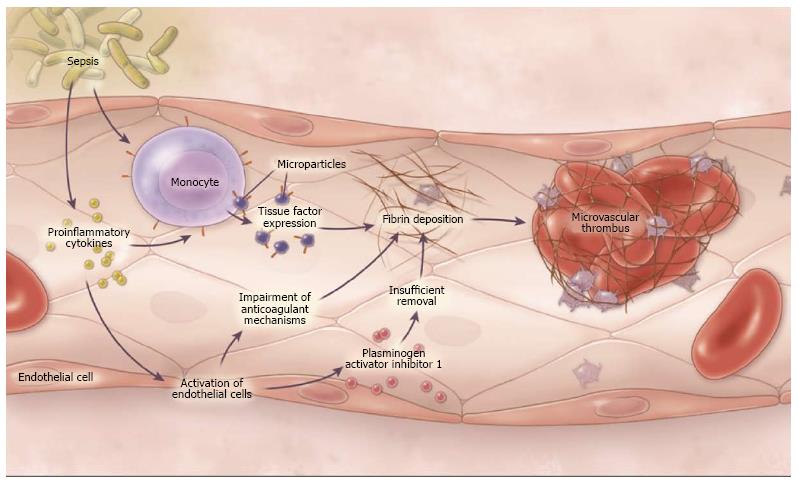Copyright
©The Author(s) 2015.
World J Crit Care Med. May 4, 2015; 4(2): 105-115
Published online May 4, 2015. doi: 10.5492/wjccm.v4.i2.105
Published online May 4, 2015. doi: 10.5492/wjccm.v4.i2.105
Figure 1 Pathogenesis of disseminated intravascular coagulation in sepsis[10].
Through the generation of proinflammatory cytokines and the activation of monocytes, bacteria cause the up-regulation of tissue factor as well as the release of microparticles expressing tissue factor, thus leading to the activation of coagulation. Proinflammatory cytokines also cause the activation of endothelial cells, a process that impairs anti-coagulant mechanisms and down regulates fibrinolysis by generating increased amounts of plasminogen activator inhibitor. Copyright © 2014 Massachusetts Medical Society (used with permission).
- Citation: Allen KS, Sawheny E, Kinasewitz GT. Anticoagulant modulation of inflammation in severe sepsis. World J Crit Care Med 2015; 4(2): 105-115
- URL: https://www.wjgnet.com/2220-3141/full/v4/i2/105.htm
- DOI: https://dx.doi.org/10.5492/wjccm.v4.i2.105













